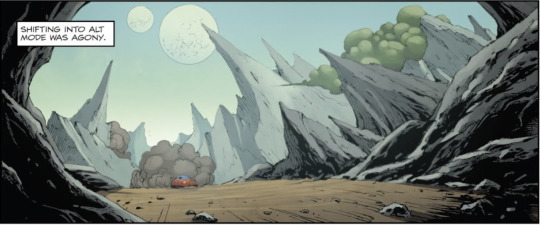#Citation Matrix
Explore tagged Tumblr posts
Text
The Matrix Resurrections
It wasn't as good as the original trilogy.
It was a disappointment for me.
Some quotes:
"- You call this a choice ? (Neo) - And the woman with the pills laughed 'cause I was missing the point. (Morpheus) - What point? (Neo) - The choice is an illusion. You already know what you have to do." (Morpheus)
"- Smoke? (Smith) - I thought you quit. (Neo) - I quit calling it a habit. Now it's just a guilty pleasure." (Smith)
"- I know you said the story was over for you, but that's the thing about stories. They never really end, do they?"
"- We're still telling the same stories we've always told, just with different names, different faces."
"- Here's the thing about feelings. They're so much easier to control than facts." (Analyst)
"- Here, our unexpected alliance ends. You know the difference between us, Tom? Anyone could have been you. Whereas I've always been anyone." (Smith)
2 notes
·
View notes
Photo
......Yeeeeeah this is what I'm talking about when I say people cherrypick screenshots without even reading the comics.





Optimus privately told Ratchet how it felt when he bonded to the Matrix. No one else knew. And when he asked Rodimus how it felt, this was his response:


Optimus lied and basically said “Oh same”
And then, YEARS later, in the Optimus Prime comics, Pyra Magna, leader of the Torchbearers of Caminus, says this:


Meanwhile, on Necroworld:

I don’t know about you guys, but I don’t think Optimus Prime is “The Arisen”, “The True Prime”.
#idw transformers#rodimus#hot rod#optimus prime#transformers#maccadam#I made a post about Rodimus' matrix experience last yr specifically because I saw this post and was like??? this is wrong and isn't fair?#i get that idw1 can be long and overwhelming and not everyone has the inclination to read everything but... tf wiki works great#it has really really detailed comprehensive summaries for each character and links and citations about what happens in what issue#pls give it a try?
5K notes
·
View notes
Text
Random Doctor Who Facts You Might Not Know, Part 38: Gallifrey at War Part 6
Tw: body horror, Time War stuff, death and destruction, lots of disturbing stuff, etc etc
During the Last Great Time War, Dalek experiments included mutating humans into Daleks to be used as cannon fodder. (Novel: Engines of War)
To fight against the Daleks, the Time Lords not only used Battle TARDISes but also time scooped N Forms, Bowships, and Black Hole Carriers from their own past to add to their forces. (Novel: A Brief History of Time Lords)
Mr. Saldaamir was a friend of the Doctor's parents. He originated before the first Time Wars, which erased his entire planet and left him as the last of his kind. (Short story: Mr. Saldaamir)
Gabrielideans are a race of liquid protean bioforms. During the War in Heaven, the Time Lords allied with them but poured packets of powder into them, which altered their biodata to an extent that it changed their physical form. This was to ensure that the Gabrielideans would be able to use humanoid skinsuits. (Novel: The Book of War; Alien Bodies)
The First Law of Time broke down during the War in Heaven, causing the War to spill over into the pre-War Era. Indeed, the Eighth Doctor (and other early incarnations, notably the Third but also the Fourth, etc etc) all had interactions with a future War. (Novel: Alien Bodies; Unnatural History; The Taking of Planet 5; Interference; Verdigris; Toy Story; Audio: The Judgment of Sutekh; Television: Pyramids of Mars; I don't think I'm missing any citations, but honestly I probably am. This happened A LOT lol)
The Predator Dalek is two times the size of a normal Dalek. The interior has a seat inside of it, surrounded by monitors, dials, probes, and spikes, including a large needle which would insert in the soft tissue at the back of a humanoid skull. This was intended to house the War Doctor inside of it. (Novel: Engines of War)
During the War in Heaven, the Celestis had used a fictional generator to bring to life H.P. Lovecraft's Elder Things. A group of Time Lords purposefully regenerated into bodies resembling these Elder Things in order to blend in and complete their mission. (Novel: The Taking of Planet 5)
The Celestis were the elite members of the old Celestial Intervention Agency who removed themselves from history to escape the War in Heaven. Other Houses typically thought of them as monstrosities. (Novel: Alien Bodies; The Book of War)
Project Revenant was a project set up by the War Council during the Last Great Time War to resurrect dead Time Lords from the Matrix. (Audio: Celestial Intervention)
It was housed in a pocket dimension connect to Gallifrey through the Death Zone, but when Daleks invaded the pocket universe to use the Project for their own ends, the pocket dimension was destroyed but not before the power core was removed. This power core allowed for the resurrection of Rassilon. His Martrix projection was imprinted on Valerian, which ended in Valerian's death. (Audio: Desperate Measures)
The planet Reave in the constellation of Kasterborous was so anti-Gallifrey during the Last Great Time War that they had graffiti depicting the demise of Time Lords and would douse their streets in Praxis gas to choke out any Gallifreyan that may be hiding in their midst. This was largely because the High Council was sanctioning terrorist attacks to blow up Reave's factories, but that did not prevent Gallifreyans not responsible for the attacks - like the Eighth Doctor - from getting Praxis gassed. (Audio: A Heart on Both Sides)
Considering that events in the Last Great Time War were constantly in a state of temporal flux, it was impossible to know for sure what happened. In truth, everything "has happened, then not happened at all, then happened again but at a different time entirely." (Novel: A Brief History of Time Lords)
The Moon of Tenacity was the site of a Gallifreyan Military Moon Base. The Eighth Doctor and his companions were taken here after they were captured. His companions were locked away to convince the Doctor to fight in the Time War, and he was conscripted to the recruitment camp. (Audio: The Conscript)
The Faction Paradox members wear masks made of skulls. These skulls sometimes belonged to Time Lords from an alternate universe where they lost the Eternal War. (Novel: Alien Bodies)
Not all Faction Paradox members used these AU Time Lord skulls though. Some wore the skulls of other species, and Godfather Auteur had his actual skull exposed. This was because his skin had been ripped off, so his body was just bones held together by shadows. (Short story: A Bloody (And Public) Domain)
First 1 Prev 37 Next 39
#doctor who#dw#dr who#classic who#new who#eighth doctor#war doctor#big finish#big finish doctor who#big finish audios#dw eu#doctor who eu#doctor who expanded universe#gallifrey#time war#last great time war#war in heaven#the war in heaven#faction paradox#third doctor#fourth doctor#gallifrey audios#the doctor#time lords#time lord#bliss#daleks#ollistra
73 notes
·
View notes
Text
How to Conduct a Literature Review Using Digital Tools (with Notion Template)

Embarking on a literature review is a fundamental component of academic research that can often appear overwhelming due to the sheer volume of relevant articles and sources. However, leveraging digital tools like Notion can substantially streamline and enhance this process. By providing a structured approach, Notion enables researchers to manage their literature reviews with greater efficiency and organization. This comprehensive guide will walk you through a methodical literature review workflow using Notion, explore various digital tools, and offer a Notion template to facilitate your research.
The Benefits of Using Notion

Notion is an advanced organizational tool that integrates the functionalities of note-taking, project management, and database creation into a single platform. Its versatility is particularly advantageous for managing a literature review. Here are several key benefits of using Notion:
Integration of Pages and Databases: Notion allows for seamless linking of pages and embedding of databases within other pages. This interconnected structure facilitates comprehensive data management and easy navigation between related information.
Customizable Filters and Sorting: Users can create custom properties and apply filters to databases, which enables sophisticated sorting and retrieval of data tailored to specific research needs.
Efficient Data Management: Notion supports the transfer and management of data from Excel sheets, enhancing the organization and accessibility of research materials.
In my workflow, Notion plays a central role through two primary databases: the ‘literature tracker’ and the ‘literature notes’ matrix. These databases are instrumental in tracking papers and synthesizing information to construct a coherent argument.
Stages to Literature Review Workflow

1. The Literature Search
The initial phase of a literature review involves a systematic search for relevant sources. This step is critical for building a comprehensive and well-rounded review.
Identify Keywords: Begin by developing a list of keywords that are pertinent to your research questions. Engage with your supervisor or colleagues to refine this list, ensuring it encompasses all relevant terms. As you progress, be prepared to adjust your keywords based on emerging research trends and findings.
Utilize Database Search Tools: Employ established databases such as Web of Science, Scopus, Google Scholar to locate pertinent literature. These platforms offer extensive search functionalities and access to a broad range of academic papers. Additionally, set up email alerts for new publications related to your keywords. This proactive approach ensures that you remain informed about the latest developments in your field.
Library Building and Recommendations: Manage your literature library using tools like Mendeley, which facilitates the organization of references and offers recommendations for related papers. Mendeley’s sharing capabilities also enable collaboration with colleagues, enhancing the collective management of research resources.
2. Literature Mapping Tools

Literature mapping tools are invaluable for visualizing the relationships between papers and identifying key research themes.
Citation Gecko: This tool constructs a citation tree from ‘seed papers,’ illustrating the connections between various studies through their citation relationships. It is particularly useful for uncovering seminal works and understanding the progression of research topics.
Connected Papers: Connected Papers uses a similarity algorithm to generate a graph of related papers based on a given key paper. This tool provides insights into related research that may not be immediately evident through direct citation links, helping to broaden your understanding of the field.
3. The Literature Tracker
An organized literature tracker is essential for managing and reviewing research papers effectively.
Organize with Notion: Utilize Notion’s customizable properties to document essential details of each paper. This includes metadata such as title, author, publication date, keywords, and summary. The ability to filter and sort this data simplifies the process of managing large volumes of literature.
Database Views: Notion offers various database views, such as the kanban board, which can be used to track your reading workflow. This visual representation aids in monitoring your progress and managing tasks associated with your literature review.
4. The Literature Synthesis Matrix
The synthesis matrix is a crucial component for organizing and synthesizing information from the literature.
Second Pass of Papers: After an initial screening, populate the ‘literature notes’ database with detailed information from the papers you deem relevant. This should include comprehensive notes on the paper’s summary, key results, methodology, critiques, and any future work suggested.
Relational Databases: Leverage Notion’s relational database capabilities to link related papers and create a synthesis matrix. This matrix helps in identifying connections between different studies and assists in constructing a coherent narrative for your literature review.
5. Writing Your Literature Review

Writing a literature review involves synthesizing the collected information into a structured and insightful analysis.
Identify Research Themes: Use your literature matrix to pinpoint key research themes and questions. These themes will form the basis of your literature review sections and guide the development of your thesis statement(s).
Summarize and Evaluate Sources: Focus on the most significant sources for each theme, summarizing their key points and critically evaluating their contributions. This involves assessing the strengths and weaknesses of each study and linking related research to provide a comprehensive overview.
Situate Your Research: Clearly articulate the research gap your study addresses, justifying your research approach based on the identified gaps and the synthesis of the reviewed literature.
6. Iterating Your Literature Review
A literature review is a dynamic process that requires regular updates and revisions.
Regular Updates: Continuously update your literature review as new research emerges. Balance the time spent on reading with the progress of your own research to ensure that your review remains current and relevant.
Notion Template
To facilitate your literature review process, I have developed a Notion template that includes:
A Literature Tracker Database: For recording and managing details of relevant papers.
A Literature Notes Database: For detailed notes and synthesis of the literature.
Predefined Properties: For filtering and sorting entries according to specific research needs.
You can duplicate and customize this template to fit your research requirements.
Useful Resources
Here are some additional resources that can aid in the literature review process:
The Literature Review: Step-by-Step Guide for Students
3 Steps to Save You From Drowning in Your Literature Review
How to Write a Literature Review
How to Become a Literature Searching Ninja
Mind the Gap
7 Secrets to Write a PhD Literature Review The Right Way
By following this structured approach and utilizing digital tools like Notion, you can streamline your literature review process, enhance organization, and ensure that your research is thorough and well-founded. This methodology not only simplifies the review process but also provides a robust framework for developing a strong thesis or dissertation.
Investing in your academic future with Dissertation Writing Help For Students means choosing a dedicated professional who understands the complexities of dissertation writing and is committed to your success. With a comprehensive range of services, personalized attention, and a proven track record of helping students achieve their academic goals, I am here to support you at every stage of your dissertation journey.
Feel free to reach out to me at [email protected] to commence a collaborative endeavor towards scholarly excellence. Whether you seek guidance in crafting a compelling research proposal, require comprehensive editing to refine your dissertation, or need support in conducting a thorough literature review, I am here to facilitate your journey towards academic success. and discuss how I can assist you in realizing your academic aspirations.
#gradblr#academics#education#grad school#phd#phd life#phd research#phd student#phdblr#study#studyspo#students#studyblr#studying#student#study motivation#study blog#university student#uniblr#university#dissertation help#dissertation writing#dissertation abstract#dissertation topics#phdjourney#graduate school#thesis writing#thesis help#thesis tag#thesis statement
5 notes
·
View notes
Text
Title: Hypermobility, the Ehlers-Danlos syndromes and chronic pain
Date: September 2017 Published in: Clinical and Experimental Rheumatology Publicly available? Yes (pdf will download)
Citation: Syx, D., De Wandele, I., Rombaut, L., & Malfait, F. (2017). Hypermobility, the ehlers-danlos syndromes and chronic pain. Clin Exp Rheumatol, 35 (5), 116–122.
Abbreviations:
ECM: extracellular matrix
EDS: Ehlers-Danlos syndrome (lowercase letters in front indicate the subtype; e.g., hypermobile EDS = hEDS)
GJH: generalised joint hypermobility
HSD: hypermobility spectrum disorder
JH: joint hypermobility
JHS: joint hypermobility syndrome
MSK: musculoskeletal
Article Summary
Abstract
Hypermobility, joint hypermobility syndrome, and Ehlers-Danlos syndromes
Joint hypermobility (JH) is a range of movement in a joint that exceeds what is normal (accounting for the age, gender, and ethnicity). JH can be localised or generalised with GJH being defined by a score of at least 5 on the Beighton scale.
JH has a strong genetic basis and is affected by gender, age, and ethnicity but can also be affected by environmental factors including weight, training, trauma, surgery, and medical conditions.
JH does not necessarily lead to symptoms and is not a disease or permanent diagnosis
The history and historical classifications related to GJH are detailed and the overlap with connective tissue disorders including Marfan syndrome, osteogenesis imperfecta, and notably Ehlers-Danlos syndromes (EDS)
EDS is a group of disorders that mainly affect the soft connective tissues but that are varied in their genetic and phenotypic (observable characteristics) presentations. Major characteristics include skin hyperextensibility and fragility; vascular fragility with easy bruisability and a variable bleeding tendency; joint hypermobility (usually generalised) and manifestations of generalised connective tissue fragility. The severity of symptoms can be varied.
There are now 13 EDS subtypes (expanded from the 6 originally identified in 1997) with molecular defects identified in 19 different genes. The effects are briefly discussed and Table III details these defects.
One of the most prevalent subtypes of EDS, hypermobile EDS (hEDS), is still molecularly unexplained. hEDS shows considerable overlap with JHS and it has been considered that they may be the same and/or can be used interchangeably. Hypermobility syndrome and JHS have therefore been combined into the single HSD diagnosis to be used for patients with symptomatic JH who do not meet the new criteria for hEDS or another form of EDS. This review uses JHS instead of HSD as it is a review of old literature (consider them interchangeable).
The natural history of pain in JHS and EDS
The compromised structural integrity of connective tissues, people with EDS and JHS are prone to joint instability, and as a result, joint disclocations (full displacements and subluxations), and articular and soft tissue injuries. This commonly causes acute and reccurent pain which can evolve to chronic widespread musculoskeletal (MSK) pain.
Approximately 3.3% of women and 0.6% of men experience chronic pain but these numbers are likely an underestimation since clinicians are generally unaware of GJH-related pain. More recent studies have found incidences of chronic pain over 90% in hEDS patients -- higher than that in cEDS. Clinicians report that pain is the primary reason fro seeking medical help and the most frequent complaint but more studies are needed.
Most studies focus on hEDS and many do not distinguish between hEDS and JHS.
Pain usually starts in early life and is often triggered by an apparent external factor such as an injury, surgery, psychological distress, or by a comorbidity. The pain is initially felt as an acute and localised symptom or as 'growing pains' related to the trauma. Muscle cramps, pariarticular inflammation, enthesopathies, and nerve entrapment syndromes can add to the localised MSK pain.
The pain later becomes widespread, most commonly presenting as arthralgias and myalgias (joint and muscle pains) in young adult and adult patients. The pain is most frequently localised in the neck, shoulders, forearms, fingers, hips, knees, and feet and may, at first, be localised to a few joints or muscles with a migratory pattern. The pain will gradually become more widespread and additional symptoms including burning sensations, peripheral paresthesias, generalised hyperalgesia, allodynia, and hypersensitivity to various stimuli (e.g., light, sound, and odors) become apparent. Pain in non-articular regions (e.g., headaches, gastro-intestinal, pelvic) as well as fatigue often appear. The underlying cause of the fatigue is unclear.
The pain is generally resistant to the use of analgesics (painkillers), surgery, and physical therapy. This can have a negative effect on physical, social, and emotional wellbeing.
The pathogenesis of pain in hypermobility and EDS
The underlying causes and mechanisms of pain in JHS and EDS are poorly understood.
Pain caused by an injury or damage (nociceptive pain) is often present, especially in early stages and neuropathic pain may also contribute to the pain (and account for parasthesias) and be exacerbated by dislocations and subluxations. Central sensitisation may also contribute to the pain becoming chronic.
It has been proposed that lack of proprioceptive acuity (ability to sense joint position and movement) and muscle weakness play a role in generating chronic pain. The fear of pain is common in people with JHS and hEDS and can cause deconditioning and exercise intolerance which leads to a cycle.
It is hypothesised that abnormalities in the extracellular matrix (ECM) can contribute to the generation and chronification of pain. The ECM has a clear role in the general detection of noxious stimuli (nociception) and painful injuries have been shown to alter the the ECM at acute and chronic time points after the injury. The ECM also has a role in neuroplasticity and connectivity of the central nervous system.
Patients with EDS have defects in different components of the ECM which can lead to a devastating impact on the nervous system. Defective connective tissue can also inhibits the body's ability to react protectively to stretching or pressure of peripheral nerves.
The abnormal ECM may contribute to the central sensitisation that causes the chronification of pain.
The complex nature of pain in JHS and EDS patients, fragmented understanding of the underlying mechanisms, and lack of reported effectiveness of treatments highlight the fact that the management of pain in JHS and EDS patients.
Management requires pharmacological and psychological therapy.
Conclusion
#summary#medical#chronic pain#ehlers danlos syndrome#eds#hypermobile ehlers danlos syndrome#heds#hypermobility spectrum disorder#hsd#hypermobility syndrome#hms#joint hypermobility syndrome#jhs#clinical and experimental rheumatology#generalised joint hypermobility#gjh
4 notes
·
View notes
Text
Incidentally, Hume’s ideas resonate powerfully with postmodern understandings of identity and selfhood. Foucauldian theorists hold the idea of an authentic interiority as purely fictional, since all subjectivity is produced, or at least enabled, by discursive power. The self is seen as endlessly performative, birthed through unceasing citational identifications. From this point of view, the eighteenth-century play with identities can be seen as a superficial phenomenon in the face of a more comprehensive understanding of (personal) identity as a non-volitional performative fiction. The subject can choose to perform different mask-like identities in order to adapt herself to different contexts in life; those performances, however, take place within a matrix of power that preforms and conditions them. Therefore, they are always partly non-volitional—and, moreover, they always also profoundly constitute the individual as a subject that imagines herself to be autonomous and to have a stable, internal core of a self.
Soile Ylivuori, from Women and Politeness in Eighteenth-Century England: Bodies, Identities, and Power
#soile ylivuori#women and politeness in eighteenth century england: bodies identities and power#nonfiction#essays#2022 reads
2 notes
·
View notes
Text
Principles of Polarization Tomography Multifunctional Digital Histology in the Diagnosis of Prescription Damage to Internal Organs
Abstract
For high-precision objective histological determination of the prescription of damage to internal organs over a long period of time, a systematic approach was used based on digital azimuthally invariant polarization, Mueller-matrix and tomographic methods for studying temporal changes in the molecular and polycrystalline structure of brain, liver and kidney samples in the postmortem period. It was revealed that the linear change in the magnitude of statistical moments of the 1st - 4th orders, characterizing the distribution of data from digital azimuthally invariant polarization, Muller-matrix and tomographic methods, is interconnected with the duration of damage to internal organs in the time interval from 1 hour up to 120 hours. On this basis, a new algorithm for digital histological determination of the age of damage is proposed.
Read More About This Article: https://crimsonpublishers.com/fsar/fulltext/FSAR.000629.php
Read More Crimson Publishers Google Scholar Articles: https://scholar.google.com/citations?view_op=view_citation&hl=en&user=BcljX0IAAAAJ&cstart=20&pagesize=80&authuser=1&cit crimsonpublishers ation_for_view=BcljX0IAAAAJ:_Ybze24A_UAC
0 notes
Text
A key to humankind
A message to Pi Gamma Mu, the American national social science honor society, upon receiving its national honor key. The award was one of two made at the annual banquet of the society in Washington on April 26, the other one being awarded to General Douglas MacArthur. The following citation went with Mme. Chiang's award.
Madame Chiang Kai-shek: Heir of ancient culture, co-creator of a new; blender of thought of East and West; cheerful and courageous counselor of a people in their sorrows and successes; twentieth century stateswoman; upon you, as a prominent participant in the intellectual and spiritual renaissance of a nation, the national social science honor society, Pi Gamma Mu, confers honorary membership and bestows the symbol of its highest distinction, its national honor key.
Madame Chiang Kai-shek's response, made public on May 4.
In accepting with pride and gratitude the signal honor you have conferred upon me by the presentation of this key, I realize that through me you wish to give recognition of the work that hundreds of thousands of my fellow compatriots have performed in social services, which are the embodiment of social science. Your society, I understand, was established to give the high cachet of your approval to endeavors to better the conditions under which the masses live, labor and have their being. The matrix of real democracy lies in its concern for the welfare of the people. Endeavors toward this goal are being made with the earnestness and sincerity in many countries, but even in those in which social science has progressed most - even in America itself, which has taken the lead in this as in so much else, and in other advanced states - there are large sections of the population living in circumstances which are an anomaly and reproach.
35
In China we were slowly but steadily advancing the practical application of social science when in 1937 there came the rude interruption of war. But even in war, which demanded and is still demanding our utmost national effort, we have followed the path pointed out by Dr. Sun Yat-sen in his principle for the livelihood of the people. The New Life Movement, which itself is the sublimation of social science, has received great impetus during the war, as was well shown when eighteen months ago the National Government created the Ministry of Social Affairs.
The war inevitably brought its own tremendous social problems and opened new avenues of social service. We were suddenly called upon among innumerable other things, to care for the millions of refugees, hundreds of thousands of families of recruits, and vast numbers of children who had lost their parents. The burden was heavy and our means meagre, but they were augmented by the generous assistance received from America and other friendly nations. This gesture of sympathy and good will was deeply appreciated by all our Chinese people.
Brevity is the soul of other things besides wit, and it is especially necessary on occasions like this that one should be brief. Let me conclude, therefore, with this one remark: This key symbolizes social science itself, which unlocks the casket of desire to help their fellow creatures that lies hidden in the hearts of all humankind. Thank you again.
36
#we chinese women#mme. chiang kai-shek#speeches and writings during the first united nations year#eleventh installment
0 notes
Text

Mastering Google Maps: A Blueprint for Business Growth
In today's digitally-driven marketplace, establishing a strong online presence is paramount for business success. Among the plethora of tools available, Google Maps stands out as a game-changer, offering businesses unparalleled opportunities to enhance their visibility and attract customers. Let's delve into how mastering Google Maps can propel your business growth to new heights.
Unlocking the Potential of Google Maps
Google Maps isn't just a navigation tool; it's a dynamic platform that connects businesses with their target audience. By harnessing its features effectively, businesses can increase their online visibility and stand out in local search results.
Setting the Foundation: Google My Business
The journey to Google Maps mastery begins with optimizing your Google My Business (GMB) profile. This includes providing accurate business information, such as your address, phone number, and hours of operation. A well-optimized GMB profile increases your chances of appearing in relevant search results, driving more traffic to your business.
Navigating Local SEO
Local search engine optimization (SEO) plays a crucial role in Google Maps visibility. By optimizing your website and content for local search queries, you can improve your rankings and attract customers in your area. Strategies such as keyword optimization, local citations, and online reviews can significantly impact your local SEO efforts.
Leveraging Google Maps Marketing
Google Maps offers various marketing opportunities for businesses to reach their target audience effectively. From location-based advertising to Google Maps ads, businesses can leverage these features to enhance their visibility and attract customers. Crafting compelling ad campaigns tailored to your target audience can yield impressive results.
Analyzing Insights for Success
Data-driven decision-making is essential for optimizing your Google Maps strategy. By analyzing insights such as user behavior, search trends, and competitor performance, businesses can refine their approach and stay ahead of the curve. Regularly monitoring key metrics allows you to identify areas for improvement and adjust your strategy accordingly.
Partnering with Global Matrix Solution
At Global Matrix Solution, we specialize in helping businesses unlock the full potential of Google Maps for growth. Our team of experts offers tailored solutions to optimize your Google Maps presence, attract more customers, and drive business growth. Partner with us and embark on a journey to Google Maps mastery today!
0 notes
Text
This week in audiobook adventures, staying on the historical fiction kick with the totally bizarre Lincoln in the Bardo, which was half prose and half historical citations with a massive cast. Now I'm listening to Matrix (Lesbians Nuns. Eleanor of Aquitaine. Intrigue!) which is also thankfully shortish, interesting enough, but is written in such a bizarre tense where all the dialogue is written as "She said, that she did this and that" which is just so odd.
#speeding through it nicely. will finish tommorow#listening to the terror as a first audio book has me go oh thank god its not as long as the terror for every audio book now#Lincoln in the bardo was super weird but nothing will ever beat bear harmonica
0 notes
Text
OPEN BOOK EXAMINATION (OBE)
DR SEKAR SRINIVASAN - UN Educationist
OBE-1 INTRODUCTION
▪️Critical thinking promotion is the main outcome of OBE
▪️Problem solving skills for applying conceptual knowledge with deeper understanding of the subject matter.
▪️One should think critically in real world situations.
▪️Reduced memorization pressure. Decreases the examination stress and phobia.
▪️If the students are clear with concepts then accessing resources becomes easier.
▪️It promotes resource management skills.
▪️Text books , notes and online materials should be effectively managed and skillful navigation for solutions is much desired in today’s digital age.
▪️Learning engagement is promoted which directly increases the motivation to explore more real life solutions and situations and application during learning.
▪️This increases the interest in the subject matter.
▪️Application of knowledge assessment is primarily done in OBE.
▪️Ability to apply theoretical knowledge to practical situations.
▪️OBE presents open ended questions that require analysis and synthesis of information.
▪️Student’s comprehension ability is needed more towards measure of learning outcomes.
▪️Over dependence on resources during exams reduces to certain extent individual performance skills with freedom of imagination and it provides a travel in the set matrix.
▪️Limitation to access the complete resources plays a crucial role for all stakeholders with a common point.
▪️Time management for potentially impacting their performance is a major parameter of consideration in OBE.
▪️OBE may conceal deficiencies in understanding so it becomes challenge for educators in assessing mastery.
▪️Only with vigilant monitoring and implementation, OBE can ensure ethical standards and academic integrity.
OBE-2 BASIC REQUIREMENTS FOR TEACHERS AND THEIR ROLE
▪️Facilitating the transfer of information from text books to student’s minds.
▪️Retrieval methods of learning concepts during examination.
▪️Shortcut methods for accessing the facts from resource materials.
▪️Provide ample mind mapping and concept maps for every individual topics as well as links or chain for each unit.
▪️Improved and effective utilization of color codes during preparation for ready and quick access from resources to manage optimum time utility during exams.
▪️To do away with the wrong notion towards regular studies. Stress “MEANS ALWAYS JUSTIFY THE ENDS”
▪️Notes taking during class room activities (lectures) is to be strengthened with advanced research methodologies available under this topic. Certain foreign universities provides this as a bridge course introductory topic for specialization.
▪️The OBE envisages more on how the course concepts work together rather than simply compare or evaluate information.
▪️Here the algorithm of formation of flowcharts, the steps involved in solving the problem in arriving at the solution is more stressed.
▪️Teacher should look for a structural breakups with logical arguments which leads to solutions.
▪️Self tests by teachers for familiarizing OBE is essential and practical outcome experiences should be communicated with curiosity and innovative creativity.
OBE – 3 ROLE OF STUDENTS IN OBE
Students should be familiar with all nuances of OBE.
They should not hesitate to get:
▪️Clarification from teachers for even silly doubts in the following.
▪️Exactly what is allowed and not allowed in exam halls.
▪️Wether citation of sources to be side tracked in answers.
▪️Learning methodologies and recapitalization techniques.
▪️Time management vistas.
▪️Organization of resources with the flow of question paper patterns.
���️Minimum or optimum usage of resources for maximum time saving and complete presentation of answers to the point.
▪️Mastering shortcuts, color coding, emphasis underlining with markers, key points access methods, page reference index, boxing formulae and graph points.
▪️Crystal clear summary of each topic and core concept dealt under each unit, their interlink as chain for other chapters or furtherance in applications.
▪️Preparation should focus on Application, Analysis, Synthesis, Comparisson, Evaluation and problem solving
▪️Maximum number of repeated rehearsals as model tests with both content capture as well as time management.
▪️Answers should be direct, simple, self explanatory and to the point.
▪️Surely you can answer by yourself, some questions without reference.
▪️Paraphrasing a given answer with a structured presentation should be mastered instead of long paragraphs.
▪️Concise and well supported answers will attract more credit points.
▪️Final revision and review of answers for clarity and accuracy OBE will be more useful.
▪️Controversial or materials with distorted facts of ambiguity may yield undesirable or poor credits and lead to conflicts in answering. ▪️So be familiar with the right selection of resource materials well in advance.
▪️One has to put in maximum efforts with perseverance and accommodative mentality when venturing into untreated paths of this journey.
▪️Life is a journey of challenges and risks. OBE will definitely prepare you to build self confidence in making you more self reliant and to face any platform in finding rational yet objective solutions on win-win borders.
With best wishes, Regards Dr. Sekar Srinivasan UN EDUCATIONIST.

0 notes
Text
Picsart Photo Editor

Wellcome friends in this article I am covering The PicsArt photo editor then feel free to read this article and don't forget to press the follow button.
Picsart is the biggest across-the-board inventive foundation of the photograph, video altering, and configuration apparatuses. An environment of allowed to-utilize content. Join the Picsart people group of the north of 150 million makers all over the planet. With the Picsart artificial intelligence photograph proofreader and video manager, you can bring your innovativenessPhotograph Supervisor is an instrument and application that assists you with editing a wide range of photographs on a cell phone. Picsart is your go-to, across-the-board man-made intelligence-helped supervisor with every one of the devices you want to give your substance an individual pizazz and make it stick out.
Picsart Elements:
Photograph Proofreader
Take a stab at moving channels for pictures and famous photograph impactsUtilize the Foundation Eraser to delete and supplant foundationsTidy up pictures and eliminate undesirable items with the Eliminate Article deviceUse a great many organized, free pictures or alter your own photos Add text to photographs with 200+ originator textual styles Correct selfies with hair variety transformer, cosmetics stickers, and moreObscure foundations with our artificial intelligence-controlled shrewd determination deviceImmediately flip and harvest photographsAdd stickers to pictures and make your own stickers
Man-made intelligence Instruments
Transform text into pictures with man-made intelligence Picture Generator and make extraordinary, adjustable pictures naturallyExpand, upscale, and de-commotion inferior quality pictures to make them more honed with artificial intelligence UpgradeTransfer photographs of yourself to produce your own one-of-a-kind, tweaked symbols in various styles with man-made intelligence Symbol
VIDEO Proofreader
Make and alter recordings with our simple to-utilize video proofreader with musicTake your IG Stories, TikToks, and Reels to a higher levelAdd music to your recordings utilizing our broad video proofreader music libraryCrop video clasps to the ideal aspects and proportionsAttempt Error video impacts and other stylish channels in the video managerTrim recordings or utilize brilliant video consolidation to mix recordingsConfiguration utilizing the slideshow creator with musicAdd your best minutes to a video collection
Arrangement Producer
Make on-pattern photograph arrangements with your #1 picturesAttempt photograph matrix collection, free-form arrangement, scrapbook, and edges for picturesCirculate around the web with our image generator and offer companionsGo through the Story Creator and level your Instagram game with Story layouts
STICKER Producer + FREE STICKERS
Find over 60+ million Picsart stickersAdd stickers to pictures to turn up the tomfoolery level of your altersMake remarkable custom stickers
Photograph Impacts and Channels
Animation yourself in seconds with astounding Wizardry impactsFrame selfies with the famous Sketch impactsTransform representations into creative works of art with Material impactsMake Trickle Workmanship with dribbling impact stickers and modify the mix mode
DRAWING Apparatus
Use Picsart Draw with adjustable brushes, layers, and ace drawing instruments
Doodle on pictures and make the impact of a straightforward garment
Begin with a fresh start to make craftsmanship and representations without any preparation.
All satisfied materials on this [https://www.alittletip9.com] are safeguarded by intellectual property regulation and are the proprietor's property. No piece of this [https://www.alittletip9.com] might be replicated, dispersed, or sent in any structure or using any and all means, including copying, recording, or other electronic or mechanical strategies, without the earlier composed consent of the proprietor, except brief citations encapsulated in basic audits and certain other noncommercial purposes allowed by intellectual property regulation.
0 notes
Text
Boost Intel CPU Speed for(GNN) Graph Neural Network Training

Graph Neural Network Training (GNN) Accelerated on Intel CPU with Hybrid Partitioning and Fused Sampling
High points
A novel graph sampling technique dubbed “fused sampling,” created by Intel Labs and AIA, may speed up the training of Graph Neural Networks (GNNs) on CPUs by up to two times. One of the most widely used libraries for GNN training, the Deep Graph Library (DGL), now includes the updated sample process.
With the use of a novel graph partitioning technique called “hybrid partitioning,” Intel Labs has been able to significantly accelerate the distributed training of Graph Neural Networks (GNNs) on huge networks. Popular graph benchmarks have seen epoch durations reduced by as much as 30%.
Using 16 2-socket computers, each with two 4th Gen Intel Xeon Scalable Processors (Sapphire Rapids), the combination of fused sampling and hybrid partitioning set a new CPU record for training GNNs on the well-known ogbn-papers100M benchmark, achieving a total FP32 training time of just 1.6 minutes.
In several graph-related tasks, including link prediction in recommendation graphs, molecular graph physical property prediction, and high-level semantic feature prediction of nodes in citation graphs and social networks, Graph Neural Networks (GNNs) have achieved state-of-the-art performance. In many fields, graphs may include billions of edges and millions of nodes.
Training over the whole graph at once may rapidly deplete memory. Sampling-based training is one of the most widely used techniques for training GNNs on big graphs: we randomly select a small portion of the graph (small enough to fit in available memory) for each training iteration and train the GNN on this graph sample. However, as a illustrates, the time required for the graph sampling during each iteration may easily eclipse the time for the forward and backward runs of the GNN.
The graph is often divided among many computers to speed up sampling-based training, as seen in the machines are in charge of producing their own graph samples and using them to train the GNN model. Each computer would need to speak with other machines in order to create a graph sample since the graph topology is divided across the devices. As we generate bigger graph samples, this communication cost will increase. When the GNN model includes additional layers, the graph sample size usually grows.
In the following, we outline two complimentary methods that tackle the significant communication cost associated with distributed sample-based training and the high sampling CPU sampling overhead now experienced by popular machine learning libraries.
1. Combining Sampling
Every training iteration must include graph sampling. Thus, it is essential to sample graphs as quickly as feasible. Popular GNN libraries, like DGL (a popular GNN training library), provide a typical sample pipeline that consists of several phases that each produce intermediate tensors that must be written to and subsequently read from memory.
2. Adaptable partitioning
When a graph becomes too large to store in the memory of one training machine, it is often divided among many machines. The relevant graph data required for each machine to train the GNN model is requested and provided via inter-machine communication. We have noticed that the majority of the graph representation size is often occupied by the characteristics connected to the graph nodes. More than 90% of the RAM required to display the graph is often occupied by the node characteristics.
Inspired by this finding, we created a novel partitioning technique called hybrid partitioning, which, as splits the graph exclusively according to its node properties while reproducing the relatively tiny graph topology information (the graph’s adjacency matrix) across all training machines. Because the machines only need to communicate node characteristics, this results in a significant decrease in the number of communication rounds in distributed sampling based GNN training trials.
As a fused sampling in conjunction with hybrid partitioning resulted in a significant decrease in epoch durations for distributed sample-based GNN training. Even on its own, hybrid partitioning improves performance; when combined with fused sampling, it increases epoch times by more than two times. We obtain a record-breaking total FP32 training time of under 1.6 minutes on 16 2-socket computers by using hybrid partitioning and fused sampling.
Read more on Govindhtech.com
0 notes
Text
Title: Dental Manifestations of Ehlers-Danlos Syndromes: A Systematic Review
Date: March 2020 Published in: Acta Dermato-Venereologica Publicly available? Yes
Citation: Kapferer-Seebacher, I., Schnabl, D., Zschocke, J., & Pope, F. M. (2020). Dental Manifestations of Ehlers-Danlos Syndromes: A Systematic Review. Acta dermato-venereologica, 100(7), adv00092. https://doi.org/10.2340/00015555-3428
Abbreviations:
EDS: Ehlers-Danlos Syndrome(s) -- lowercase letters in front indicate the subtype; e.g., hypermobile EDS = hEDS
Article Summary
Abstract
[Introduction]
EDS are a group of clinically and genetically heterogeneous group of hereditary connective tissue disorders mainly affecting the skin, ligaments, blood vessels, and internal organs. The current classification 13 distinct subtypes.
The biology of dental tissues (Figure 1) implies that tooth abnormalities might occur in EDS.
Enamel is a highly mineralised tissue with traces of organic material that is not collagen. Enamel contains low amounts of collagen I and VII, the later of which likely plas a role in bonding enamel to dentine
Dentine is a mineralised tissue composed of hydroxyapatite crystals embedded in a 3D collagen network. The organic matrix contains type I collagen with traces of types III and V collagen.
The dental pulp is a loose connective tissue characterised by its anatomical location. Types I, III, and V collagen are present.
The periodontal ligament anchors the tooth root to the alveolar bone. It is highly specialised and contains well-defined collagen fibre bundles (predominantly types I, III, and XII). Acellular root cementum is a mineralised hard connective tissue that anchors the periodontal ligament to the tooth root.
Patients with EDS often have a low oral health-related quality of life due to 'physical pain, psychological discomfort, and handicap.' Whilst these symptoms are often not as severe as other EDS symptoms, they can have a major impact on quality of life. Dental health professionals are often overwhelmed by or unfamiliar with the special requirements or symptoms and treatment guidelines are lacking.
Materials and Methods
Explains the methods used to search, screen, and select literature to include in the review and explains how they were assessed.
Results
Figure 2 details the process of selection and exclusion
Classical EDS: summarised in Table II
Vascular EDS: summarised in Table III
Hypermobile EDS: summarised in Table IV
Rare subtypes: summarised in Table V
Discussion
The true prevalence and relevance of dental abnormalities in EDS remains unknown despite various reviews and case reports. Absence of genetic confirmation and problems separating dental features in EDS from other conditions have caused ambiguity and lack of evidence has led to incorrect assumptions (e.g., the claim that individuals with cEDS are at a higher risk of periodontitis, a finding that did not show up in this review).
The strongest evidence of disease-specific dental abnormalities is in vEDS. These abnormalities include pulp shape modifications and root abnormalities. No pulp calcification, abnormalities in tooth number, or other dental findings were reported.
Pulp calcification is a common finding in cEDS and has also been reported in individuals with hEDS, dEDS, and pEDS; however there is a high prevalence in the general population and this may be coincidental.
Defective dentinogenesis with bulbous enlargement or localised root hypoplasia (shortened roots) is common in and appears to be specific to cEDS. This can mimic periodontal destruction however the treatment is completely different (splinting vs periodontal treatment).
Dentinogenesis imperfecta is a rare published feature of aEDS
Early severe periodontitis was reported in an individuals with vEDS and one with hEDS though early severe periodontitis cases are more likely to represent pEDS.
In vEDS, a gingival phenotype (characterased by generalised thinness and translucency of the gingica and mucosa, and decreased stippling with a papyraceous aspect) was observed in 94% of patients.
Periodontal manifestations in other EDS subtypes were rare.
Like dental manifestations, research into periodontal manifestations of EDS is lacking.
The rarity of EDS means that some findings may be coincidental due to the small number of participants.
In future, only case reports/series and studies with genetically validated EDS diagnoses should be published.
Conclusion
1 note
·
View note
Text
maya burke is functionally dead ...
for all intents and purposes that name is lost to me
an admixture of inheritance, my mother's sense of inspiration and creativity, and a non-consensual contractual relationship wit the feds
ive continued to release music and perorm as maya nell, dropping burke, burgh, and that particularly sub lineage of the larger river of colonial distress and imperial geography
ive kept up as maya nell, for convenience, and because i am still fond of that way southern elderly black folk say my name, how the nell feels and sounds said with love and a familiar endearment
because of the memory mum has of seeing maya angelou speaking at berea college, because of the meaning i have found in and around the word maya
i am treating the name as an object, inert and emotionally detached from myself, a tether to the irs and social security offices, and a weighty shadow of all the projections pressed upon me, all the times my name has been said with disdain
all the times i have been held with contempt, and weapons formed against me
i am treating this i.d. card anchor to the matrix as a citation, and a vessel for particularly rigid modes of writing
from here, maya nell can say whats left needed saying, although i am tiring of wearing her, draped like a heavy cloak
its funny to feel in drag in ur whole govvvv name, funny ...
...pulling focus soon !!
maya :: murungi !! they're pulling focus!!!
sometimes , juggling many names, all the balls can drop to the floor
the space between them, the plurality that at times feels so abundantly euophoric, is all of a sudden all severeity all void
all gone, you are gone from yourself your sense of inner facing love?
TOAST absolutley toasted. in this economy? bent on ... bent on singular singular singaulr expressions of everything fucking flattening and where do those otherized into the trenches and margins, and those within the interesections where do we go where do we hold the multitude of our inheritances
the festival director the record company man the advertising agent all said that splitting your artist image is bad for branding bad for marketing bad for everything bad for consistency or getting your music out there or distributino or whatever and i said to hell with it, i couldnt fix this if i tried, even if i wanted to (still) which i don't (now) after much MUCH wrestling with my own self hatred self abnegation self sabotage allllllllllllllllllllllll of that, pinned down into an infinite hole of lovelessness that really just opened up when i accpeted i needed to be engendered as someone else, as some one in the the plural tense
tense
back to tension now
back to the tension, the space between names and bodies and senses of self -- the integrity of these boundaries, the sovereignty we have over our intimate lives,
its all blurring together again, and i remember that i am still pulling focus, still in_transition, hmm
m :: m
09132023
1 note
·
View note
Text
Orbital Ameloblastic Carcinoma – Unusual Presentation in A Non-Odontogenic Location

Abstract
Ameloblastic carcinoma has been described as an ameloblastoma in which there is histological evidence of carcinoma in a primary or recurrent ameloblastoma. The frequency of the lesion is estimated to be less than 1% of all ameloblastomas occurring in the mandible and maxilla.1 We present a case of a 30-year-old woman who presented with painless swelling of left upper face and recurrent upper respiratory tract infections. She was evaluated with CECT, MRI and PET-CT which showed 3.6 x 3.5 x 3.3 cm mass arising from the inferomedial wall of left orbit with sunburst periosteal reaction and cloudy osteoid matrix which was thought to be an osteosarcoma. She underwent a transorbital and trans nasal endoscopic wide local excision of the lesion which was then diagnosed as ameloblastic carcinoma on histopathology. Imaging features and pathological findings of the tumor along with novel treatment strategies and differential diagnosis are discussed in this case report.
Keywords: MRI; orbital tumor; ameloblastic carcinoma; osteosarcoma; CECT; PET
Abbreviations: 18F-FDG-PET: 18F-fluorodeoxyglucose–Positron Emission Tomography; CECT: Contrast Enhanced Computed Tomography; FLAIR: Fluid Attenuated Inversion Recovery; MRI: Magnetic Resonance Imaging; WHO: World Health Organization
Read More About This Article Click on Below Link: https://lupinepublishers.com/otolaryngology-journal/fulltext/orbital-ameloblastic-carcinoma-unusual-presentation-in-a-non-odontogenic-location.ID.000260.php Read More about Lupine Publishers Google Scholar Articles: https://scholar.google.com/citations?view_op=view_citation&hl=en&user=dMOUw-wAAAAJ&cstart=100&pagesize=100&citation_for_view=dMOUw-wAAAAJ:v_xunPV0uK0C
#lupine publishers#lupine publishers group#scholarly journal of otolaryngology#journal of otolaryngology#sjo
0 notes